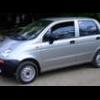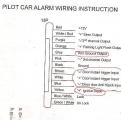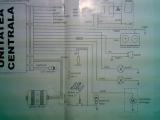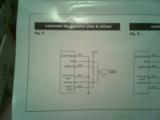-
Posts
202 -
Joined
-
Last visited
Content Type
Profiles
Forums
Events
Everything posted by Gizmo
-
Salut, Ia vezi daca attach-ul asta te ajuta cu ceva. Si explicatiile de rigoare: gray- este o iesire care se face - (minus) cand sistemul este armat brown- intrare pe - (minus), se leaga la contactele usilor white- intrare pe +(plus), se leaga la contactele usilor (la tine se leaga intrarea pe minus, respectiv brown) blue- intrare pe - (minus), se leaga numai usa soferului (e o functie ciudata si te sfatuiesc sa legi toate usile la brown) yellow- leaga-l unde spune manualul, la +contact. blue/white - se leaga la albastru actuator green/white - se leaga la verde actuator
-
Salut, Scuze ca nu am putut sa te ajut pana acum, dar abia astazi am ajuns in Craiova. Deci: 1. Tie iti trebuie o schema (cum este urmatoarea de mai jos), de la cea mai ieftina alarma de pe piata cea de tipul Type-R. 2. Sau una putin mai complexa cum este cealalta din atasament (cea din fisierul Instalare_alarma). 3. Cuplarea actuatorului pt alarma de tip Type-R (fara modul de IC). Sper ca cu aceste scheme sa te poti descurca. Daca nu te descurci da-mi un semn si te sun pe mobil. Numai bine
-
Salut, Vezi ca trebuie sa mai ai o schema electrica de montaj. Pune-o si pe aia sa ma uit pe ea si apoi iti explic cum se monteaza. Cat despre inchiderea centralizata o sa incerc sa iti fac o schema ca sa te prinzi cum vin montate actuatoarele. Este foarte simplu. Mie unul mi-a luat aproximativ o ora sa montez inchiderea. Numai bine.
-
Salut, Daca zici ca tatal tau este electrician auto, atunci este destul de usor sa o montezi. M-am uitat pe schemele pe care le-ai pus si sunt mai mult decat suficiente si de explicite (chiar si pt. unul care nu are habar). Daca totusi nu te descurci da-mi un PM si iti explic pe larg cum se monteaza. Numai bine
-
Salut, La mine consumul sta cam asa: 1. Aprins bec rezervor 2. Bagat 14 litri benzen la rezervor 3. Drum parcurs zilnic: ~8 km dus-intors de la servici 4. Plecat dimineata la 5.30, doua stopuri pe drumul dus si doua pe drumul de intoarcere (cateodata mai prind si de doua ori la stop cand ma intorc acasa) 5. Aprins bec iarasi: 188 km la bord (facuti numai in oras in stilul descris mai sus) . Rezulta un consum de (cu aproximatie): 7,5 l/100km. Destul de bine zic eu avand in vedere ca in ultimul timp a fost destul de rece afara. Numai bine
-
Ehe...referitor la cuva de inox: daca as invarti si eu sutienele cum le invarte cuva aia...as fi mare Acuma daca stam sa ne gandim: va dati seama ce pot face niste sutiene?? Sa distruga ele bunatate de masina de spalat . Nici nu vreau sa ma gandesc ce ar insemna puse ...pe ceva...brici . Cred ca m-ar durea capul toata ziua
-
...ca detinatori de asa ceva. Stati asa...ca eu am fier de calcat Daewoo, televizor Daewoo si mixer Daewoo asa ca ...
-
Pai masina de gatit nu ai luat nu? Si cred ca nici masina de spalat vase!
-
Salut Pana acum cea mai lunga distanta a fost Craiova-Constanta cu plecare la 6.00 AM din Craiova si ajuns la 15.00 PM (cu aproximatie) in Constanta. M-am simtit excelent dupa drumul asta... adica destul de odihnit. Numai bine.
-
Salut Da de ce Emile "saracul Matiz"??? E tot masina si e facuta tot din "fiare". Ce naiba...nu va mai uitati la ea ca la un bibelou ca nu este. Ce crezi ca daca este clasa mini nu poate sa faca nimic??? Eu unul am mers pana la Olanesti cu masina full (trei persoane in spate plus bagaje aferente) si ca sa fiu cinstit eu am avut senzatia ca sunt...intr-o masina!! Eu unul sunt satul sa merg pe strada si toti sa ma depaseasca si asta la 110 km/h si daca te uiti la fata lor ranjesc atat de tare incat se fac cu ruj pe urechi!! Si de ce? Vezi tu doamne au depasit un Matiz!!! Hai sa fim seriosi. Este masina care este si cu asta basta. Numai bine
-
Salut Eu iar nu pot sa vin doua saptamani la rand (una a trecut) . Tura asta a doua ... ca m-am saturat de ea pana peste cap. Numai bine.
-
Salut, Din dorinta de a veni in intampinarea celor care doresc sa monteze antena originala de Matiz (aici fiind si locul in care s-a explicat cum se monteaza casetofonul) , m-am gandit sa fac un mic tutorial, ce-i drept fara poze pt. ca nu am avut cu ce sa le fac la vremea respectiva In primul rand sunt necesare urmatoarele materiale: - una bucata antena matiz- - una bucata cablu antena matiz (cablul original de matiz are pe el niste capse de plastic si are o grosime de 5 mm). - niste silicon sanitar, de preferinta transparent. - niste ata putin mai groasa - banda adeziva - surubelnita in cruce - masina de gaurit (de preferinta una cu acumulator) Montajul presupune urmatorii pasi: 1. Pt. inceput se demonteaza plafoniera si parasolarul din dreapta (cel de langa sofer). 2. Se demonteaza apoi plasticul de pe stalpul din dreapta. Ca sa fie mai usor se apuca de la coltul de sus, cel dinspre plafon, si se trage incet de el. Este prins cu niste capse de plastic si se desface usor trebuie doar sa aveti grija sa nu rupiti ceva. 3. Urmatorul lucru care se demonteaza este cutia de manusi, apoi prin gaura care se creeaza se baga mainile si se da jos capacul airbagului. 4. Toate astea se fac ca sa se creeze spatiul de lucru si sa va puteti misca usor. 5. Urmatorul pas este aflarea CL-ului masinii (axa de simetrie a masinii). Pt. lucrul asta este nevoie de putin ajutor. Se ia sfoara si se face un nod la unul din capete. Acest nod se fixeaza (sau tine cineva de el) la unul din colturile parbrizului. Atentie este vorba de coltul care este pe plafonul de tabla si nu de coltul chederului din interiorul parbrizului (adica pe geam). 6. Se trece sfoara peste masina la coltul opus si se intinde bine, apoi se face nod la acest capat. 7. Dupa asta se ia sfoara si ...ca sa aflati unde este jumatatea se pun cele doua noduri unul langa altul, se intinde si se obtine astfel jumatatea iar acolo se face iarasi un nod. 8. Se pune sfoara inapoi pe masina aliniind nodurile de capat la colturile chederului (dupa cum am scris mai sus) si apoi cu un marker (ATENTIE!!!!! nu marker permanent) se puncteaza nodul din mijloc pe plafon. Astfel se obtine unul dintre punctele CL-ului. 9. Cel de-al doilea punct: se ia o lanterna mica si intrati in masina. Priviti pe parbriz exact in locul unde se lipeste suportul oglinzii retrovizoare mai precis in spatele oglinzii nu in fata ei. Pe portiunea aceea neagra unde se lipeste suportul o sa observati un punct mic prin care se vede lumina de afara. Acela este punctul de centraj al parbrizului. Puneti pe cineva sa iti lumineze cu lanterna din interior exact in punctul ala iar cu markerul se puncteaza punctul la exterior pe parbriz. 10. Astfel se obtin cele doua puncte care vor da axa de simetrie a masinii. Aceste puncte se unesc cu banda adeziva astfel se materializeaza CL-ul masinii. Linia asta este linia pe care se vor da gaurile pt. antena. 11. Acum se face pauza de o bere )))) ca ce a fost mai greu a trecut dar acum incepe partea frumoasa. 12. Acum se ia butucul antenei si se masoara distanta dintre “botul” butucului pana la centrul gaurii de prindere a antenei (asta este o masuratoare aproximativa dar stati linistiti ca o sa pice gaura la milimetru). 13. La distanta pe care o masurati adaugi 26 si obtineti astfel distanta fata de marginea chederului la care , pe CL-ul pe care l-ati materializat mai sus, se face gaura cea mare. 14. Luati masina de gaurit puneti un burgiu de 1 mm pe ea (merge si de 2 mm) si gauriti plafonul masinii. Acum nu mai puteti da inapoi ))). Urmatorul pas este largirea gaurii progresiv pana la diametrul pe care il are “cilindrul” acela cu filet de pe butucul antenei. ATENTIE: diametrul gaurii poate (si chiar asa se face) sa fie cu o jumatate de mm mai mare dacat “cilindrul” de prindere dar nu mai mare. 15. Cu smirghel fin se slefuieste putin gaura creata (dar nu pe vopseaua masinii ca faceti altele) si apoi dai cu putin grund pe gaura asta ca sa protejezi tabla de rugina. 16. Dupa ce se usuca grundul iei butucul antenei si montezi antena pe el, dupa care il infigi putin in gaura facuta. Lucrul asta se face ca sa verificati daca tzumburusul cel mic (cel de orientare a antenei) de pe butucul antenei pica cu axa pe CL-ul creat mai inainte (practic cu latura benzii adezive). 17. Priviti acum din spatele masinii si din fata ei ca antena sa fie bine asezata adica paralela cu latura masinii. 18. Dupa ce se fixeaza astfel antena, cu ea pusa pe plafon, se marcheaza locul celei de-a doua gauri (cea a tzumburusului) si...apoi se da gaura. Nu mai stiu cu precizie ce diametru are acel tzumburus (parca 5mm) dar verificati si exact cu diametrul asta se da gaura. 19. Repetati punctul 15 si pt. aceasta gaura si astfel se rezolva problema cea mai mare. 20. Acum va ocupati de tragerea cablului antenei astfel: incepeti prin a baga dinspre plafoniera capatul cu mufa care se baga in casetofon. 21. Scote-ti acest capat prin gaura de la parasolar. 22. Va uitati apoi pe stalpul din dreapta si vedeti ca pe el sunt o serie de gauri. Luati o bucata de sarma nu foarte groasa dar nici prea moale si prin gaura de la parasolar bagati incet acea sarma prin stalpul masinii. Incet si cu grija...fara sa va enervati pt. ca in zona aceea exista o gaura si trebuie sa treaca. Treaba asta nu are voie sa va ia mai mult de...hai sa zicem trei minute. 23. Acum agati o sfoara de capatul sarmei si o trageti pe acolo. Cu grija sa nu o trageti de tot, ca de capatul sforii se leaga mufa de la cablul antenei si astfel veti putea sa trageti cablul pe acolo. Va dau un sfat: incearcati sa scoateti cablul de la antena prin gaura de la baza stalpului. Acolo este o gaura acoperita cu ...hai sa zicem banda adeziva neagra de 5 x 5 centimetri. 24. Dupa toate aceste operatii se trece la berea numarul doi pt. ca mai e putin de munca. ))) 25. Acum se ia butucul de la antena, care are acel cauciuc pe el, puneti putin silicon (pe varful unui chibrit) si dati cu putin silicon pe cauciucul acela mai precis pe partea care vine in contact cu caroseria si daca vreti si mai precis de atat , in jurul tzumburusului si in jurul “cilindrului” de fixare al antenei. 26. Montati butucul pe plafon si insurubati surubul de la cablul de la antenna in butuc. Atentie cat se strange: sa nu stringeti “la disperare” pt. ca veiti lungi cauciucul de sub butuc de nu o sa il mai recunoasteti. Strangeti de asemenea maniera incat sa simtiti ca tine la mana. Eu cred ca este de ajuns atat. 27. Luati siliconul si , in masina fiind, prin gaura de la plafoniera dati cu silicon in jurul ...a ce se vede pe acolo. 28. Restul cu trasul cablului pe sub bord va descurcati la fata locului. 29. Acum montati la loc tot ceea ce ati demontat la primele puncte si cu asta ati terminat de montat antena de matiz. 30. Ceea ce mai este de facut este ca in zilele in care ploua sa verificati pe la plafoniera daca cumva curge apa...dar m-as mira sa se intample asta. Eu am montat trei antene pana acum si la nici una nu curge picatura de apa. OBS: Metoda pe care am expus-o mai sus este testata si functioneaza perfect. Primele doua antene asa le-am montat si nu a fost nici o problema. Atentie mare la modul de lucru sa nu gresesiti ceva. Ca verificare dupa ce se monteaza antena distanta dintre marginea chederului si marginea din spate a butucului antenei trebuie sa fie in jurul a 70 de mm. P.S.1: scuze pt. eventualele greseli de ortografie. Fiind la servici m-am grabit sa scriu ca sa nu ma prinda seful. P.S.2: Daca sunt intrebari va stau cu placere la dispozitie. P.S.3: Asta este metoda pe care eu m-am bazat la montarea antenei. Poate ca mai sunt si alte metode (poate mai eficiente), eu nu am facut decat sa expun metoda folosita de mine. Numai bine.
-
Ups !! Nasoala faza. Hai ca mi-ai spus ceva nou!!!!
-
Salut, Mircea o sa iti spun pe scurt ca si asa suntem off topic si in al doilea rand nu are nici un rost sa stresam colegii cu lucruri discutate (dupa cum bine spui). Asta spui tu: Nea zeuuuu, pai 5w30 e recomandat, nu 10w30 Asta, bineinteles la conditiile climatice din .ro. Pune tu degetul acolo in manual unde vezi recomandarea asta si eu il mananc. Eu vad doua asteriscuri acolo puse de producator si nu cred ca ala a fost nebun. Ce pune fiecare in motor este treaba lui. Concluzia la care s-a ajuns pe topicul pe care il specifici? Pai nu cred ca noi am produs motorul de Matiz ca sa ajungem la o concluzie poate cel mult sa avem ceva pareri. Si cu astea fiind spuse consider incheiata mica noastra discutie. Fiecare pune ce ulei vrea in motorul lui!!!! Numai bine.
-
Tolin, Crede-ma pe cuvant ca nu are nici o bila!!!!!! Valva dupa care s-a facut desenul a fost cumparata din magazin, desfacuta chiar de mine (am fost extrem de atent sa nu pierd vreun component) iar apoi am facut desenul. Si este a doua pe care o desfac si nu are bila!!! Despre bila...nu stiu nimic!! Numai bine.
-
Salut, Asa cum am promis revin cu o poza care arata constructia valvei PCV de la Matiz. Mentiune: modelul nu este precis din punct de vedere al dimensiunilor (as fi pierdut prea mult timp). Pe scurt: ceea ce se vede maro in poza este piesa centrala (metalica), iar piesa alba arata ca o saiba (tot metalica). Piesa maro se deplaseaza in functionare spre arcul conic din stanga. Sper sa va fie de folos. Numai bine.
-
Salut, Mircea nu am scris acolo ca as fi priceput in recomandari sau in altceva. Recomandarea o face producatorul si te rog frumos mai citeste odata ce recomanda producatorul pt. zona cu clima temperata (adica a noastra) Asta ar fi una la mana! A doua la mana: eu am spus ceea ce am patit eu iar la recomandarea unui motorist din fabrica am trecut inapoi pe 10w30. Nu iti spun care au fost explicatiile pt. ca oricum nu ai crede. Asta nu inseamna implicit ca sunt priceput. A treia la mana: fara suparare dar sa i-o spui lu' mutu ca se strica motorul de Matiz daca folosesti doar ulei 10W30. Daca tu chiar crezi asta atunci te invit la Craiova sa vezi un motor de Matiz care de patru ani este tratat cu 10W30, are 250 000 km si merge mai bine ca unul abia iesit din fabrica. Stii ce s-a schimbat la motor in intervalul asta?? NIMIC!!! Si nu in ultimul rand: ce te face pe tine sa crezi ca doar tu esti singurul care poti sa dai sfaturi?? Imi cer scuze fata de colegii de forum pt. ceea ce am scris mai sus, chiar daca sunt off-topic, intentia mea a fost sa ajut si in nici un caz sa arat ca sunt priceput.
-
Salut, @closchkutza: ia schimba tu uleiul cu 10W30 si sa spui daca dupa aia mai face > P.S.: eu sunt patit cu chestia asta. Aceleasi simptome ca la tine iar dupa ce am trecut inapoi la 10w30 s-a potolit instant. Numai bine
-
Cam nasol momentul!!! Nu prea am cum sa il aduc ca eu trebuie sa ajung...dar iti spun eu de ce ca poate cine stie cine citeste pe aici si ii fac rau omului. Numai bine.
-
Salut, Imi pare rau dar eu nu pot sa vin . Dar o fac spre folosul nostru. Ma duc la un electrician de la fabrica sa imi arate cum se monteaza ...un turometru pe euro 3. Numai bine.
-
Salut, Dragii mei colegi va aduc o veste buna: se poate monta turometru pe matiz euro3 fara nici un fel de adaptare!!! Am discutat saptamana aceasta cu un electrician auto si...se pare ca a venit mos Craciun mai devreme. Precizez ca (asta ca sa eliminam eventualele intrebari) cel cu care am discutat este electrician la Daewoo iar discutia a avut ca subiect turometrul digital de la Adelaida. Deocamdata astazi trebuie sa ajung la el sa imi arate si cum anume se monteaza acest turometru. Sper sa reusesc cat mai curand (nu prea dispun de mult timp liber ) sa va ofer informatii cat mai precise si eventual poze de la montare. Numai bine
-
Salut, Sa ne spui si noua cum merge cutia dupa ce il schimbi. Numai bine
-
Salut Off topic: @Alexino: Si ce faci cu vesta????? Da-o jos de acolo ca nu iti trebuie. P.S. Mie unul (care am vazut masina) imi place tare mult alarma. Numai bine
-
Salut, @costinel: Te cred pe cuvant nu trebuie sa ma convingi. Ciudat este ca avem un coleg pe forum (Alexino care e din Craiova) care a schimbat uleiul cu acelasi tip cu al tau...si el nu are nici o problema cu cutia (cel putin din cate spune el). Asa ca nu prea ...inteleg ce are cutia Te-ai dus inapoi in service cu masina sa "tragi" putin in ei? Ce explicatii ti-au dat? Ti-au aratat scris negru pe alb ca se poate folosi tipul asta de ulei la Matiz?? Am facut o intrebare iarasi la fabrica si te tin la curent. Numai bine.
-
Salut, Ia verificati voi si urmatoarea adresa ca poate va ajuta: http://babel.altavista.com/babelfish/trurl...%26car%3dDAEWOO Numai bine.








